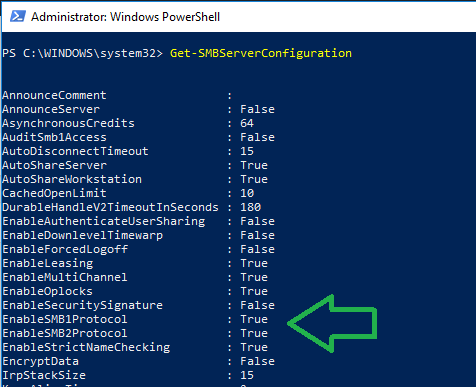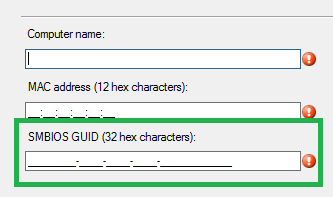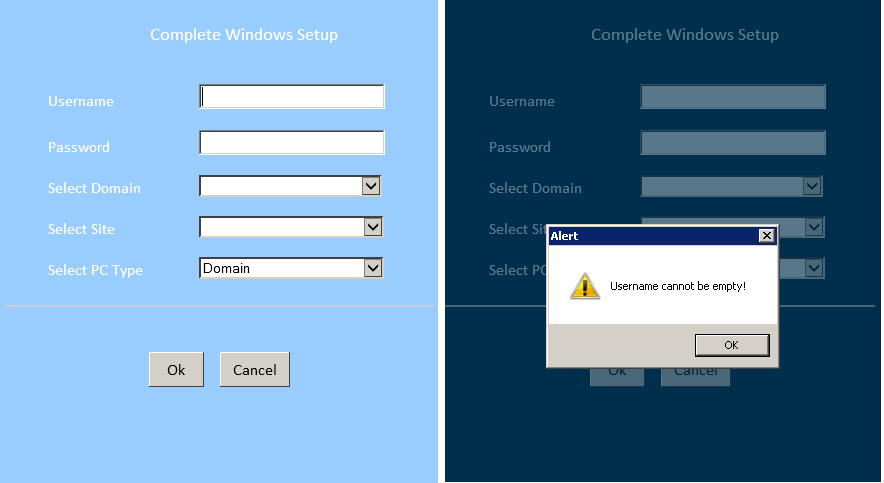This is the second part of a substitution program I wrote (this is the decoder portion); the first part was in C# (the encoder). Originally, I wrote both parts in C#, but had people asking me for something that did not require compiling to use in their scripts, so I created this VBScript. The idea is…the encoded string is accepted by the script and then translated into its original form.
This script could be utilized for encoding and decoding if you reverse (or create a function to reverse) the translation sequences (permutations).
Note, you want to make sure you change the sequences, to provide a level of uniqueness for your environment.
Option Explicit
Dim strShift, strPassword, WshShell, bufferLength, i, retValue
Set WshShell = WScript.CreateObject("WScript.Shell")
'Verify if reg key exists
KeyExists "SOFTWARE\Wow6432Node\ZWT", "ZWT1"
if retValue = "False" then WScript.Quit(1)
'Return Password
Translate()
'strPassword is translated password
'this will be what is used for elevated apps
msgbox strPassword
WScript.Quit()
'do not edit below this line unless changing permutations
'---------------------------------------------------
sub Translate()
'clip or output file could be used to grab output
CreateObject("WScript.Shell").Run "cmd /c RegRead.exe | clip", 0, True
strShift = CreateObject("htmlfile").ParentWindow.ClipboardData.GetData("text")
strShift = trim(strShift)
strShift = replace(strShift,chr(13),"")
Dim buffer()
bufferLength = Len(strShift)
ReDim buffer(bufferLength)
For i = 1 To Len(strShift)
buffer(i) = Mid(strShift,i,1)
Do While True
if buffer(i) = "O" then buffer(i) = "A" : exit do
if buffer(i) = "K" then buffer(i) = "B" : exit do
if buffer(i) = "I" then buffer(i) = "C" : exit do
if buffer(i) = "R" then buffer(i) = "D" : exit do
if buffer(i) = "B" then buffer(i) = "E" : exit do
if buffer(i) = "H" then buffer(i) = "F" : exit do
if buffer(i) = "P" then buffer(i) = "G" : exit do
if buffer(i) = "W" then buffer(i) = "H" : exit do
if buffer(i) = "J" then buffer(i) = "I" : exit do
if buffer(i) = "V" then buffer(i) = "J" : exit do
if buffer(i) = "G" then buffer(i) = "K" : exit do
if buffer(i) = "A" then buffer(i) = "L" : exit do
if buffer(i) = "C" then buffer(i) = "M" : exit do
if buffer(i) = "T" then buffer(i) = "N" : exit do
if buffer(i) = "N" then buffer(i) = "O" : exit do
if buffer(i) = "Q" then buffer(i) = "P" : exit do
if buffer(i) = "U" then buffer(i) = "Q" : exit do
if buffer(i) = "E" then buffer(i) = "R" : exit do
if buffer(i) = "F" then buffer(i) = "S" : exit do
if buffer(i) = "Y" then buffer(i) = "T" : exit do
if buffer(i) = "D" then buffer(i) = "U" : exit do
if buffer(i) = "Z" then buffer(i) = "V" : exit do
if buffer(i) = "S" then buffer(i) = "W" : exit do
if buffer(i) = "L" then buffer(i) = "X" : exit do
if buffer(i) = "M" then buffer(i) = "Y" : exit do
if buffer(i) = "X" then buffer(i) = "Z" : exit do
if buffer(i) = "o" then buffer(i) = "a" : exit do
if buffer(i) = "k" then buffer(i) = "b" : exit do
if buffer(i) = "i" then buffer(i) = "c" : exit do
if buffer(i) = "r" then buffer(i) = "d" : exit do
if buffer(i) = "b" then buffer(i) = "e" : exit do
if buffer(i) = "h" then buffer(i) = "f" : exit do
if buffer(i) = "p" then buffer(i) = "g" : exit do
if buffer(i) = "w" then buffer(i) = "h" : exit do
if buffer(i) = "j" then buffer(i) = "i" : exit do
if buffer(i) = "v" then buffer(i) = "j" : exit do
if buffer(i) = "g" then buffer(i) = "k" : exit do
if buffer(i) = "a" then buffer(i) = "l" : exit do
if buffer(i) = "c" then buffer(i) = "m" : exit do
if buffer(i) = "t" then buffer(i) = "n" : exit do
if buffer(i) = "n" then buffer(i) = "o" : exit do
if buffer(i) = "q" then buffer(i) = "p" : exit do
if buffer(i) = "u" then buffer(i) = "q" : exit do
if buffer(i) = "e" then buffer(i) = "r" : exit do
if buffer(i) = "f" then buffer(i) = "s" : exit do
if buffer(i) = "y" then buffer(i) = "t" : exit do
if buffer(i) = "d" then buffer(i) = "u" : exit do
if buffer(i) = "z" then buffer(i) = "v" : exit do
if buffer(i) = "s" then buffer(i) = "w" : exit do
if buffer(i) = "l" then buffer(i) = "x" : exit do
if buffer(i) = "m" then buffer(i) = "y" : exit do
if buffer(i) = "x" then buffer(i) = "z" : exit do
if buffer(i) = "7" then buffer(i) = "0" : exit do
if buffer(i) = "4" then buffer(i) = "1" : exit do
if buffer(i) = "9" then buffer(i) = "2" : exit do
if buffer(i) = "5" then buffer(i) = "3" : exit do
if buffer(i) = "3" then buffer(i) = "4" : exit do
if buffer(i) = "6" then buffer(i) = "5" : exit do
if buffer(i) = "0" then buffer(i) = "6" : exit do
if buffer(i) = "1" then buffer(i) = "7" : exit do
if buffer(i) = "2" then buffer(i) = "8" : exit do
if buffer(i) = "8" then buffer(i) = "9" : exit do
if ASC(buffer(i)) = ASC("$") then buffer(i) = CHR(ASC("?")) : exit do
if ASC(buffer(i)) = ASC("?") then buffer(i) = CHR(ASC("$")) : exit do
if ASC(buffer(i)) = ASC("~") then buffer(i) = CHR(ASC("@")) : exit do
if ASC(buffer(i)) = ASC("@") then buffer(i) = CHR(ASC("~")) : exit do
if ASC(buffer(i)) = ASC("%") then buffer(i) = CHR(ASC("!")) : exit do
if ASC(buffer(i)) = ASC("!") then buffer(i) = CHR(ASC("%")) : exit do
if ASC(buffer(i)) = ASC("-") then buffer(i) = CHR(ASC("#")) : exit do
if ASC(buffer(i)) = ASC("#") then buffer(i) = CHR(ASC("-")) : exit do
if ASC(buffer(i)) = ASC("*") then buffer(i) = CHR(ASC("(")) : exit do
if ASC(buffer(i)) = ASC("(") then buffer(i) = CHR(ASC("*")) : exit do
if ASC(buffer(i)) = ASC("&") then buffer(i) = CHR(ASC("'")) : exit do
if ASC(buffer(i)) = ASC("'") then buffer(i) = CHR(ASC("&")) : exit do
if ASC(buffer(i)) = ASC("_") then buffer(i) = CHR(ASC(")")) : exit do
if ASC(buffer(i)) = ASC(")") then buffer(i) = CHR(ASC("_")) : exit do
if ASC(buffer(i)) = ASC("^") then buffer(i) = CHR(ASC("+")) : exit do
if ASC(buffer(i)) = ASC("+") then buffer(i) = CHR(ASC("^")) : exit do
if ASC(buffer(i)) = ASC("`") then buffer(i) = CHR(ASC(".")) : exit do
if ASC(buffer(i)) = ASC(".") then buffer(i) = CHR(ASC("`")) : exit do
if ASC(buffer(i)) = ASC(",") then buffer(i) = CHR(ASC("=")) : exit do
if ASC(buffer(i)) = ASC("=") then buffer(i) = CHR(ASC(",")) : exit do
if ASC(buffer(i)) = ASC("\") then buffer(i) = CHR(ASC("/")) : exit do
if ASC(buffer(i)) = ASC("/") then buffer(i) = CHR(ASC("\")) : exit do
if ASC(buffer(i)) = ASC(">") then buffer(i) = CHR(ASC("<")) : exit do
if ASC(buffer(i)) = ASC("{") then buffer(i) = CHR(ASC("}")) : exit do
if ASC(buffer(i)) = ASC("}") then buffer(i) = CHR(ASC("{")) : exit do
if ASC(buffer(i)) = ASC("<") then buffer(i) = CHR(ASC(">")) : exit do
if ASC(buffer(i)) = ASC("]") then buffer(i) = CHR(ASC("[")) : exit do
if ASC(buffer(i)) = ASC("[") then buffer(i) = CHR(ASC("]")) : exit do
if ASC(buffer(i)) = ASC(";") then buffer(i) = CHR(ASC(":")) : exit do
if ASC(buffer(i)) = ASC("|") then buffer(i) = CHR(ASC("|")) : exit do
if ASC(buffer(i)) = ASC(":") then buffer(i) = CHR(ASC("""")) : exit do
if ASC(buffer(i)) = ASC("""") then buffer(i) = CHR(ASC(":")) : exit do
exit do
loop
Next
strPassword = ""
For i = 0 to bufferLength
strPassword = strPassword & buffer(i)
Next
CreateObject("WScript.Shell").Run "cmd /c echo. | clip", 0, True
end sub
sub KeyExists(RegPath, RegKey)
Const HKEY_LOCAL_MACHINE = &H80000002
Dim strComputer, objRegistry, RegValue, objWshShell
Set objWshShell = CreateObject("WScript.shell")
strComputer = "."
Set objRegistry = GetObject("winmgmts:\\" & strComputer & "\root\default:StdRegProv")
objRegistry.GetStringValue HKEY_LOCAL_MACHINE,RegPath,RegKey,RegValue
If Not IsNull(RegValue) Then
retValue = True
Else
retValue = False
End If
end sub





